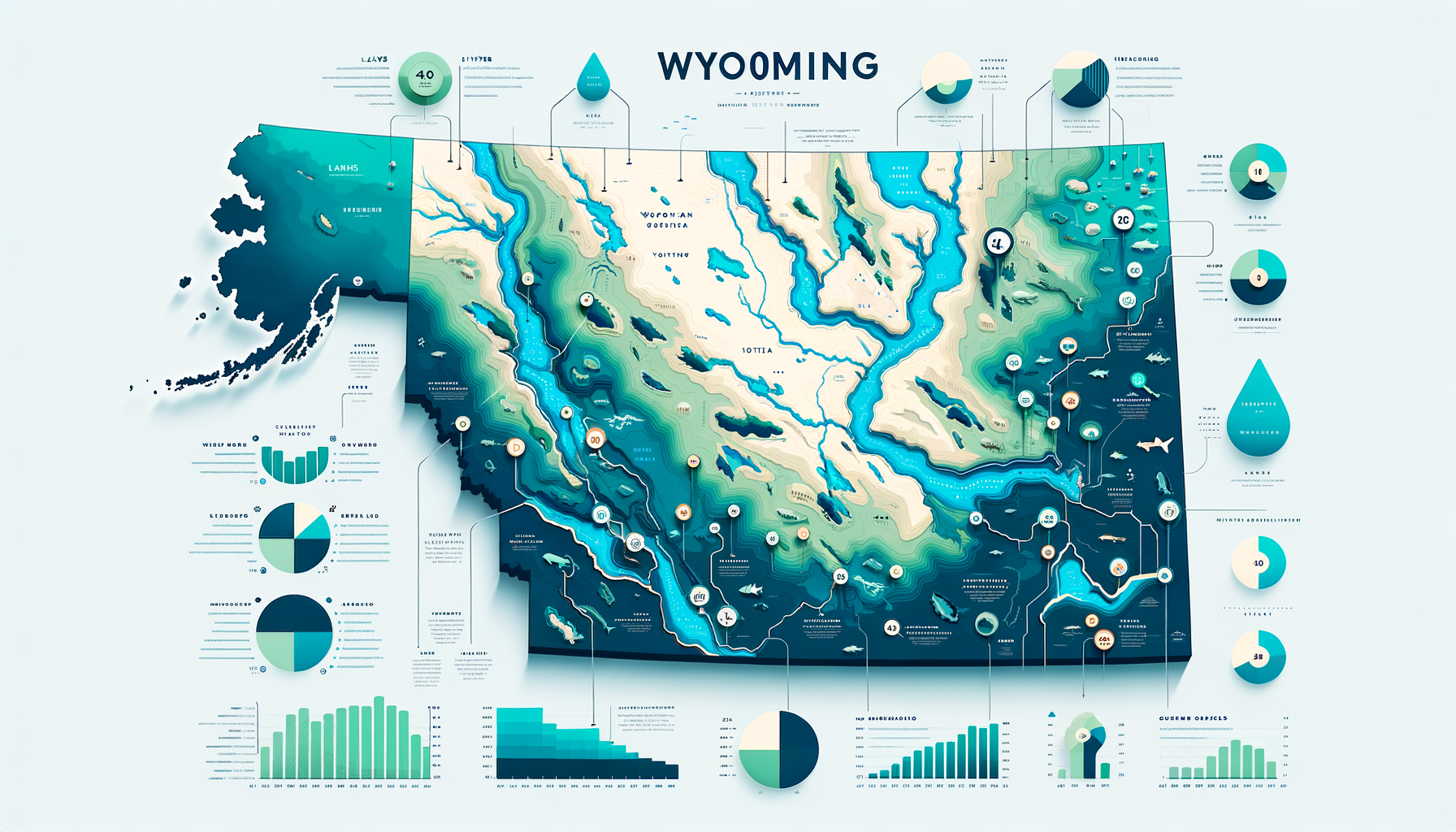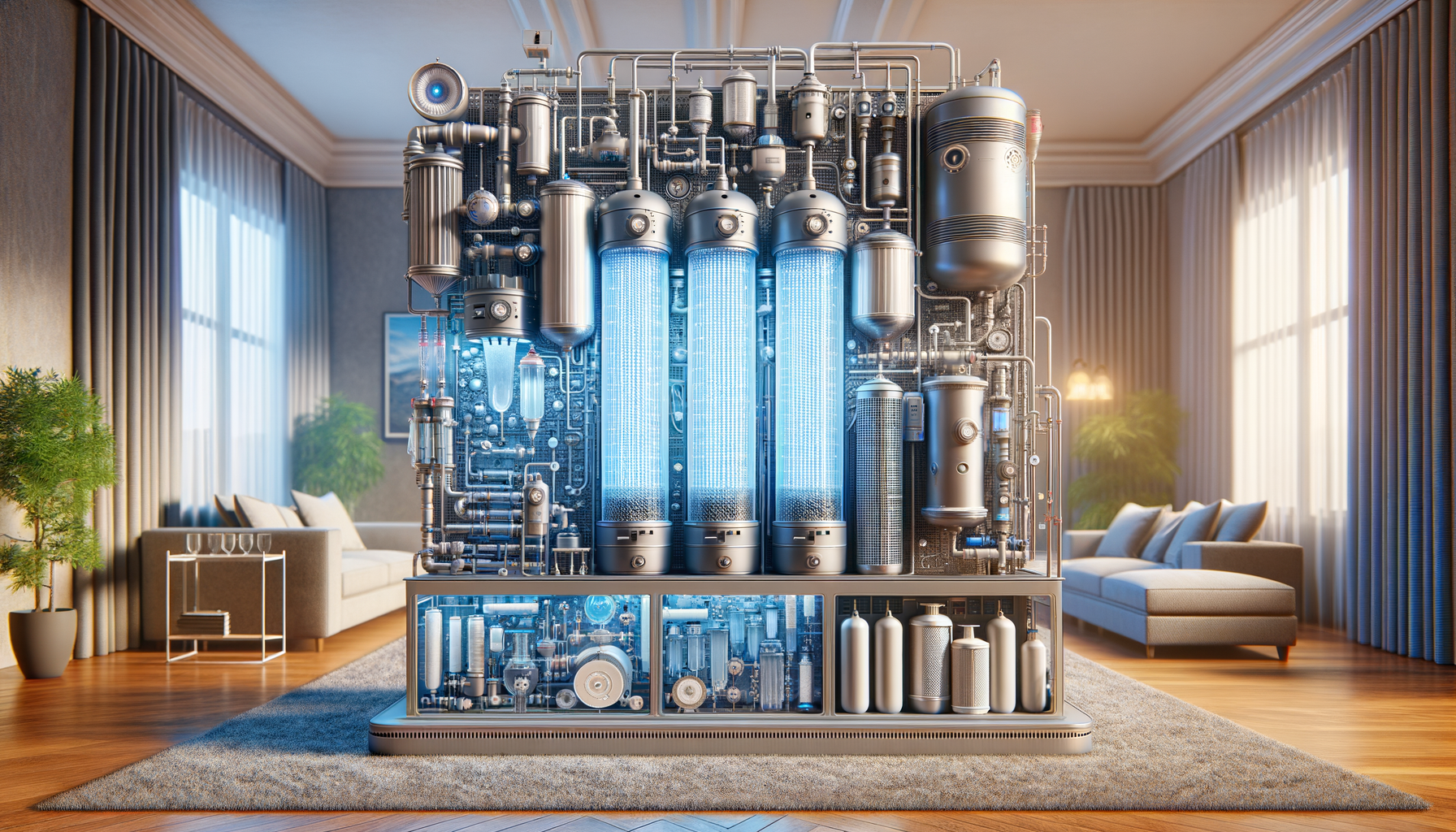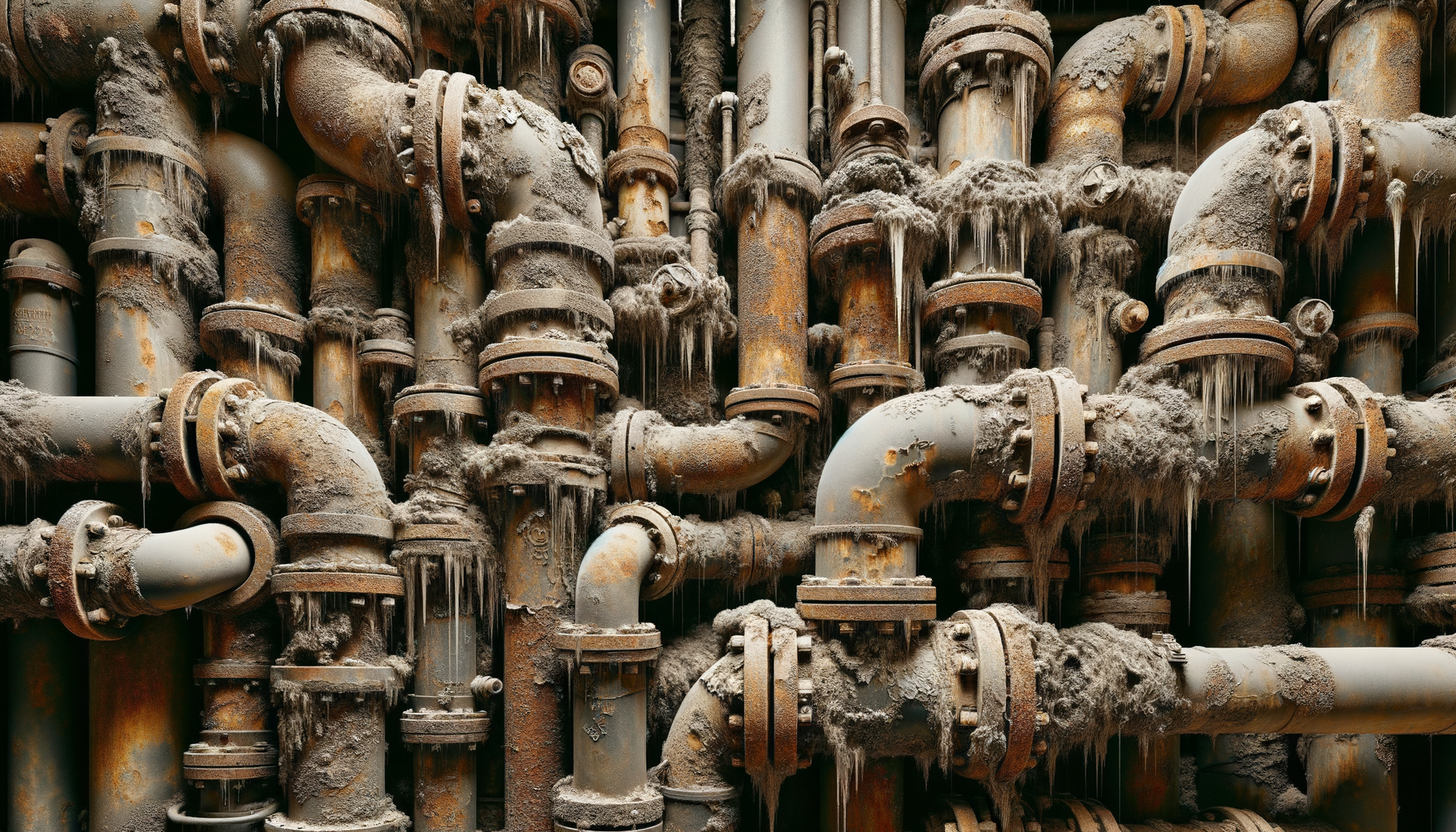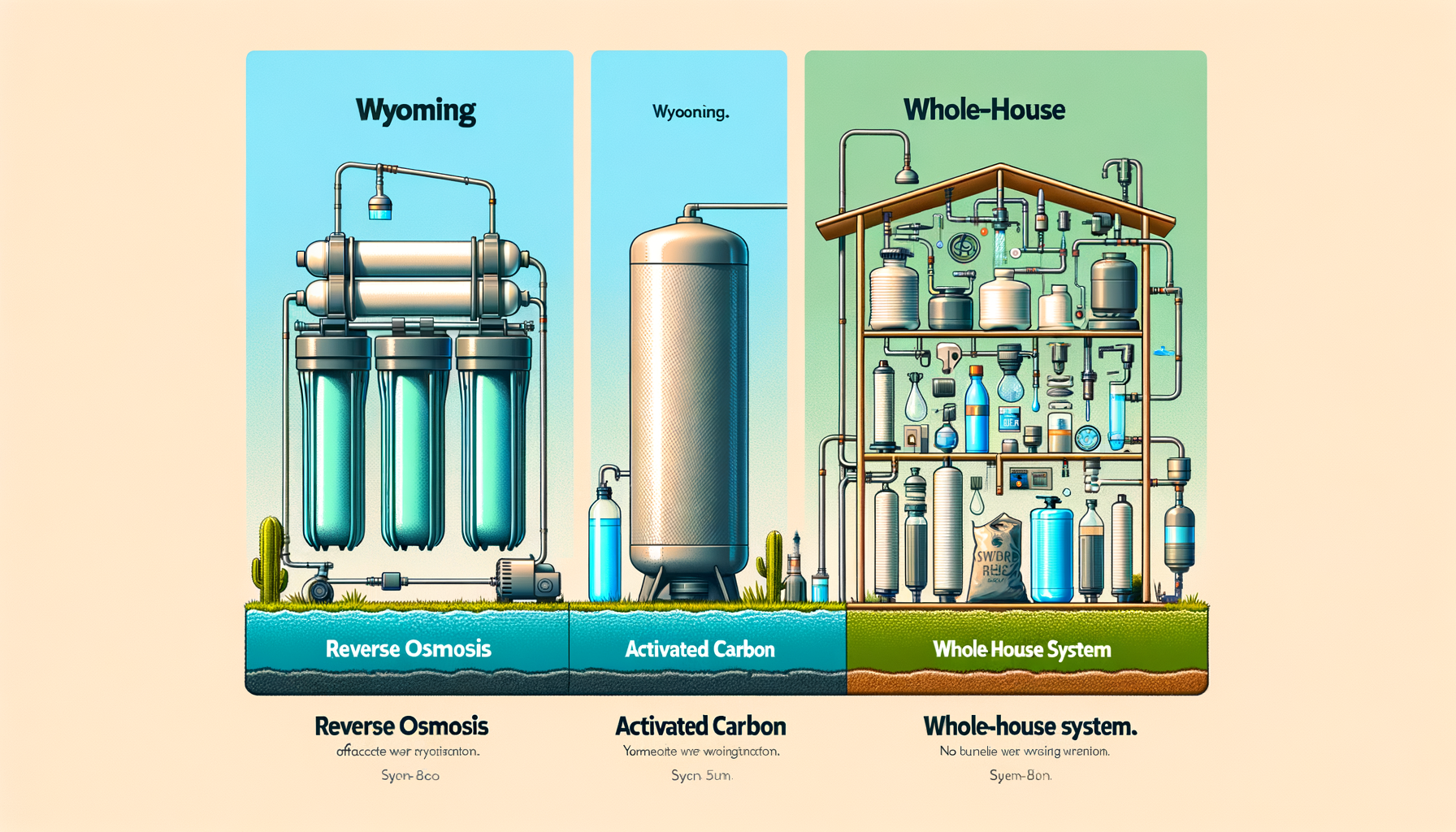Comprehensive Guide to Water Quality in Wyoming State: Contaminants, Issues, and Water Filtration Solutions
by Ryan Moreau / updated March 5th, 2025
Wyoming, known for its vast landscapes and rugged natural beauty, is a state where water plays a critical role in both the environment and the economy. From the snow-capped peaks of the Rocky Mountains to the wide-open plains, water sources in Wyoming are as diverse as the terrain itself. Despite its relatively low population density, Wyoming faces significant water quality challenges due to natural geological factors, energy production, and agricultural activities. In this comprehensive guide, we delve into the common contaminants in Wyoming’s water, regional water quality challenges, and effective filtration solutions. Start by using our Water Quality Tool to get a customized analysis of your local water conditions.
Overview of Wyoming’s Water Sources
Wyoming’s water supply is intrinsically linked to its natural features and economic activities. Key sources include:
- Surface Waters: Major rivers like the Snake, Green, and North Platte serve as critical water sources for agriculture, industry, and municipalities.
- Groundwater Aquifers: Many communities rely on groundwater from aquifers, which are recharged by snowmelt and precipitation. Aquifers are essential in rural areas where surface water is scarce.
- Mountain Snowpack: The annual snowpack in the Rocky Mountains is a vital source of water, releasing meltwater that feeds rivers and recharges aquifers throughout the spring and summer.
- Reservoirs and Lakes: Man-made reservoirs like Flaming Gorge and natural lakes provide water storage and recreational opportunities.
Effective management of these water sources is crucial, as Wyoming’s arid climate and variable precipitation make water conservation and quality a constant concern.
Common Water Quality Contaminants in Wyoming
Wyoming’s water sources may contain various contaminants due to natural geology, energy extraction activities, and agricultural runoff. To better understand what might affect your area, start with our Water Quality Tool and then review these common issues:
1. Arsenic
Arsenic is one of the most prevalent contaminants in Wyoming’s groundwater, often originating from natural mineral deposits. Chronic exposure to arsenic can lead to skin disorders, cardiovascular diseases, and increased cancer risk.
Water Filtration Options for Arsenic: Reverse Osmosis Water Filters, Activated Alumina Filters
2. Nitrates
Agricultural activities contribute to elevated nitrate levels in some areas. Nitrates can leach into groundwater from fertilizers and animal waste, posing significant risks to infants and pregnant women, including methemoglobinemia or “blue baby syndrome.”
Water Filtration Options for Nitrates: Reverse Osmosis Water Filters, Ion Exchange Systems
3. Sodium and Chloride
Increased levels of sodium and chloride often result from oil and gas extraction processes, including hydraulic fracturing. High sodium intake can affect individuals with hypertension, and elevated chloride levels can corrode plumbing.
Water Filtration Options for Sodium and Chloride: Reverse Osmosis Systems
4. Selenium
Selenium occurs naturally in Wyoming’s soil and rocks. While it’s an essential nutrient in small amounts, excess selenium can cause hair and nail loss and other health issues.
Water Filtration Options for Selenium: Reverse Osmosis Systems, Distillation Units
5. Fluoride
Fluoride levels in Wyoming’s groundwater can be naturally high due to geological formations. While fluoride supports dental health in small amounts, excessive exposure can lead to dental and skeletal fluorosis.
Water Filtration Options for Fluoride: Reverse Osmosis Systems, Activated Alumina Filters
6. Radionuclides
Radionuclides such as uranium and radon are found in some areas due to the state’s rich mineral deposits. Long-term exposure increases the risk of cancer and kidney damage.
Water Filtration Options for Radionuclides: Reverse Osmosis Systems, Ion Exchange Systems
7. Total Dissolved Solids (TDS)
High levels of TDS, including minerals, salts, and metals, can affect the taste and hardness of water. Elevated TDS is common in regions with extensive mining and energy production.
Water Filtration Options for TDS: Reverse Osmosis Systems
8. Bacteria and Microorganisms
Private wells, particularly those near agricultural operations, may be contaminated with bacteria like E. coli and Giardia, leading to gastrointestinal illnesses.
Water Filtration Options for Bacteria and Microorganisms: UV Water Purifiers, Reverse Osmosis Systems with UV
9. Sulfates
Sulfates are naturally present in some Wyoming water sources, contributing to a bitter taste and potentially causing laxative effects at high concentrations.
Water Filtration Options for Sulfates: Reverse Osmosis Systems, Distillation Systems
Regional Water Quality Challenges in Wyoming
Wyoming’s unique environmental conditions and economic activities create specific regional water quality challenges. According to the EPA and the Wyoming Department of Environmental Quality (WDEQ), key challenges include:
1. Energy Production Areas
The extraction of oil, natural gas, and coal-bed methane can lead to contamination of water sources with chemicals, salts, and heavy metals. Spills and improper wastewater disposal are significant concerns.
2. Agricultural Regions
In areas with intensive farming and livestock operations, runoff can introduce nitrates, bacteria, and pesticides into surface and groundwater supplies. Irrigation practices may also lead to salinity issues.
3. Naturally Occurring Contaminants in Groundwater
Regions with mineral-rich geology, particularly in western Wyoming, face challenges with arsenic, selenium, and radionuclides leaching into water sources.
These challenges necessitate regular water testing and, in many cases, the implementation of specialized filtration solutions to ensure safe drinking water.
General Water Characteristics in Wyoming
Understanding the general characteristics of Wyoming’s water helps in selecting appropriate treatment methods:
1. Water Hardness
Hard water is common throughout Wyoming due to high concentrations of calcium and magnesium from natural mineral deposits. This can lead to scale buildup in plumbing and reduced efficiency of water heaters and appliances.
For households dealing with hard water, installing a water softener is recommended. To find the right solution for your home, use our Water Softener Calculator for personalized recommendations.
2. Elevated pH Levels
Some water sources in Wyoming exhibit higher pH levels due to alkaline soils and minerals. While not harmful to health, high pH can affect the taste of water and reduce the efficacy of chlorine in municipal water systems.
- Alkaline Conditions: Water with high pH can cause scaling and may impact industrial processes.
- Taste and Odor Issues: Alkalinity can give water a bitter taste, affecting its palatability.
Acidic or alkaline water can be balanced using pH neutralizing filters to improve taste and protect plumbing.
3. Turbidity and Sediment
Heavy precipitation and snowmelt can increase turbidity in surface water sources, introducing sediments that may harbor bacteria or interfere with disinfection processes.
- Seasonal Variations: Spring runoff can significantly affect water clarity and quality.
- Impact on Treatment: High turbidity can reduce the effectiveness of UV disinfection and other treatment methods.
Installing sediment filters can help remove particulate matter, improving overall water quality and extending the lifespan of other filtration systems.
Utilizing the Water Quality Tool for Wyoming Residents
Wyoming residents can gain valuable insights into their local water quality using our Water Quality Tool. This resource allows you to:
- Enter your zip code to access detailed information on local water sources
- Identify common contaminants affecting your area
- Get personalized filtration recommendations based on specific water quality issues
By leveraging this tool, you can make informed decisions about water treatment solutions tailored to the unique challenges of your region.
Recommended Filtration Solutions for Common Wyoming Contaminants
Addressing the specific contaminants found in Wyoming’s water requires targeted filtration technologies:
1. Reverse Osmosis Systems
Reverse Osmosis (RO) Systems are highly effective at removing a wide range of contaminants, including arsenic, nitrates, fluoride, selenium, and radionuclides. RO systems are suitable for both point-of-use and whole-house applications.
2. Activated Alumina Filters
Activated Alumina Filters are specifically designed to reduce fluoride and arsenic levels. These filters can be used in conjunction with other systems for comprehensive water treatment.
3. UV Water Purifiers
UV Water Purifiers utilize ultraviolet light to inactivate bacteria and viruses, providing a chemical-free method for disinfecting water, especially important for private wells.
Local Water Testing Services in Wyoming
Accurate water testing is essential for identifying specific contaminants and choosing appropriate filtration systems. Consider using SimpleLab for comprehensive water quality analysis. Their services offer:
- Easy-to-use testing kits mailed to your home
- Detailed lab reports with actionable insights
- Guidance on selecting effective water treatment solutions based on your results
Utilizing professional testing services ensures you have a clear understanding of your water quality and the contaminants present.
Case Studies: Addressing Water Quality Issues in Wyoming
Learning from real-world examples highlights effective strategies for managing water quality challenges in Wyoming:
1. Riverton: Arsenic Mitigation Efforts
The city of Riverton faced high arsenic levels in its groundwater supply. By upgrading their water treatment plant with advanced filtration technologies, including reverse osmosis and activated alumina filters, the city successfully reduced arsenic concentrations to meet EPA standards.
2. Pavillion: Addressing Contamination from Gas Extraction
In Pavillion, residents experienced water contamination linked to natural gas extraction activities. Collaboration between state agencies and residents led to comprehensive water testing and the installation of whole-house filtration systems, including activated carbon and reverse osmosis units, to remove hydrocarbons and other pollutants.
3. Casper: Managing Hard Water and Scaling
Casper’s municipal water supply, sourced from the North Platte River, contains high mineral content leading to hard water issues. The city implemented water softening processes at the treatment plant, and many residents installed in-home water softeners to prevent scale buildup and improve water quality.
Call to Action
Wyoming’s diverse landscapes and industries present unique water quality challenges that require proactive management. Protecting your household from contaminants like arsenic, nitrates, and radionuclides is essential for health and well-being.
Begin by entering your zip code into our Water Quality Tool to access detailed information about your local water supply. Explore our expert filter review articles to find the most suitable water treatment systems for your needs. Finally, confirm the safety of your water by utilizing comprehensive water testing services. Take these steps to ensure your family enjoys clean, safe water, and contribute to the stewardship of Wyoming’s precious water resources.







